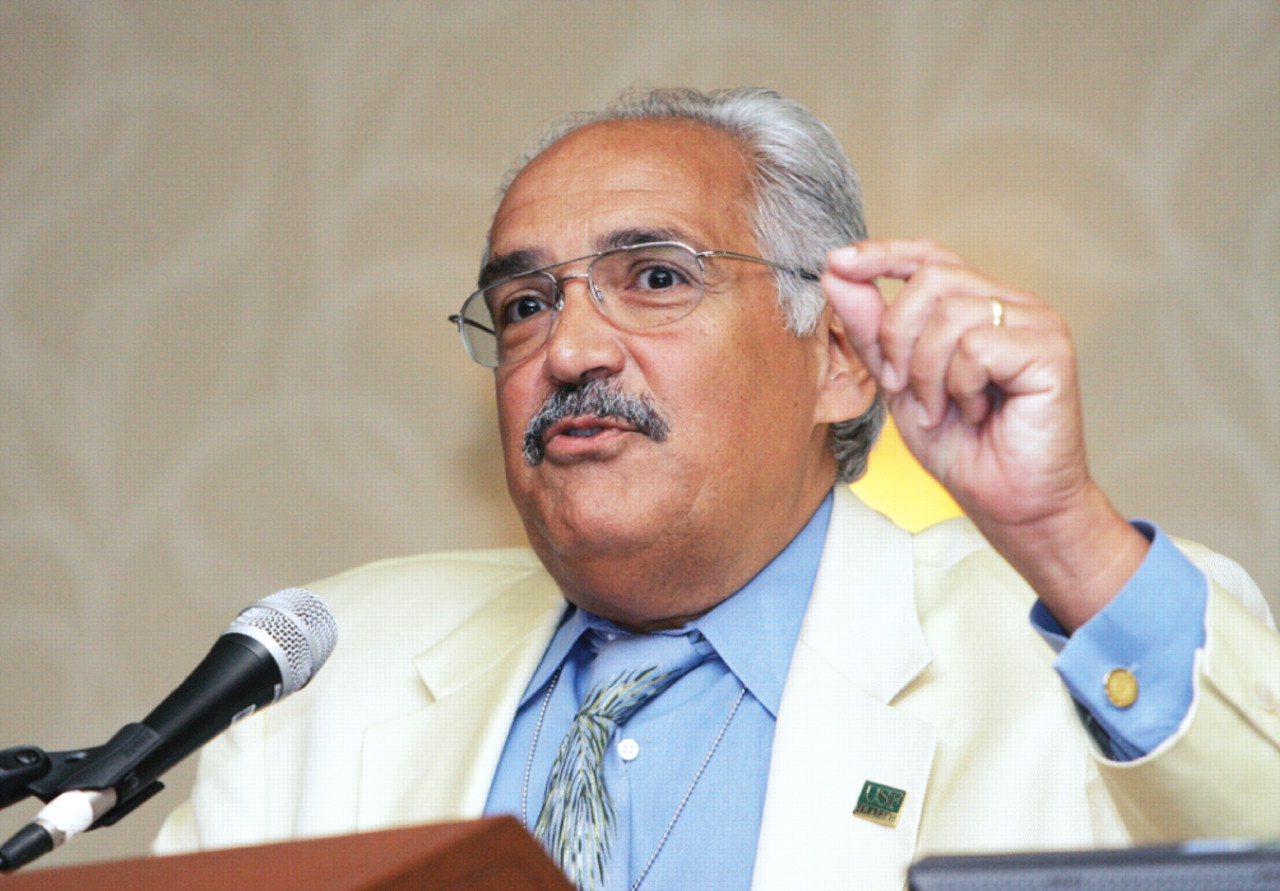Social, cultural, linguistic, and religious factors complicate efforts to discuss prevention of sexually transmitted diseases with Hispanics, a group in which HIV infection and AIDS are on the increase.
In an address at APA's 2007 annual meeting in San Diego, Francisco Fernandez, M.D., reported 2004 statistics from the Centers for Disease Control and Prevention showing that 20 percent of all new AIDS cases occur in Hispanic patients, though that ethnic group is just 14 percent of the U.S. population.
The number of new AIDS cases among Hispanics has increased steadily in the last 15 years, he observed, and is expected to keep climbing because the number of new HIV cases is increasing in this population as well.
Fernandez, who delivered the annual Simon Bolivar Award Lecture, is chair of APA's Committee on AIDS and chair of psychiatry and behavioral medicine at the University of South Florida. He is also a member of the Psychiatric News Editorial Advisory Board. His presentation was a highlight of“ Hispanic Day,” a series of special scientific and social events held the day before the annual meeting's official opening.
Fernandez underscored the need for epidemiological research focusing on“ sub-ethnic” groups—especially women and intravenous drug users—to better target prevention efforts.
Among Hispanic men with AIDS, men who have sex with men make up 51 percent of all cases and intravenous drug users, 28 percent. Among Hispanic women with AIDS, intravenous drug users account for 32 percent of all cases.
He stressed the importance of targeting HIV-positive individuals for preventive interventions aimed especially at safe-sex practices—most critically the proper use of condoms and disclosure of HIV status to sexual partners. “Every person infected with HIV was exposed by a person who was HIV positive,” Fernandez said.
In the face of these upward trends in infection, psychiatrists and other clinicians working with Hispanic populations face a number of social, cultural, and linguistic barriers that make counseling about prevention difficult.
Principal among these are difficulties imposed by language. Fernandez presented statistics from the Commonwealth Fund showing that among Asians, African Americans, Hispanics, and Caucasians, Hispanics experienced the most problems in terms of feeling understood and listened to by a doctor and being able to ask necessary questions.
“We don't do very well with the medical information that we give out,” Fernandez said. He added that the use of pictograms to facilitate verbal communication can be helpful when talking to Hispanic patients.
Reticence to discuss sexual issues is especially problematic among Hispanic patients. “If you do surveys of Hispanic women, it is sexual silence that they point to as a factor in not wanting to bring up [sexual topics] because of a fear that the man in the room will think they are promiscuous. Both men and women report high levels of discomfort with sex, making it difficult to negotiate their sexual behaviors with others.”
He noted, for instance, that Hispanic men report feeling uncomfortable having sex with lights on—a fact that renders proper use of condom more difficult, Fernandez said.
The prevalence of alcoholism among Hispanic populations is another complicating factor. “Alcohol impairs judgment and reduces the chance that you will behave and negotiate sexual encounters in a socially adaptive manner,” Fernandez said.
Also, the network of gossip among tightly knit ethnic populations can also inhibit patients from seeking out treatment.
“It's a problem that in some places the HIV clinic is called 'Clinical Immunology' and in other places it is called the 'AIDS team,'” Fernandez said. “That's not a place where people are going to walk up to the front door, because of people's fear of the gossip network.”
In general, treatment services aimed at prevention of HIV infection need to take into account these uniquely Hispanic cultural emphases:
•
Familismo: Emphasis on the family as the primary social unit and source of support.
•
Simpático: Importance in the culture of polite and cordial social relations.
•
Personalismo: Hispanics prefer relationships with others that reflect a certain familiarity and warmth and are more likely to trust and collaborate with someone with whom they have exchanged pleasantries.
•
Fatalismo: The belief that fate determines life outcomes, including HIV infection, and that fate is basically unbeatable.
For these reasons, Fernandez said, counseling Hispanic patients about prevention cannot easily be done in the three- to five-minute session recommended by the CDC, but requires the development of a relationship over time.
Nonetheless, a mental health professional may be the one clinician an Hispanic patient sees on a regular basis, Fernandez said. “We have an excellent opportunity to talk about these issues with our patients, and they typically regard their mental health professional with a great deal of respect.” ▪

